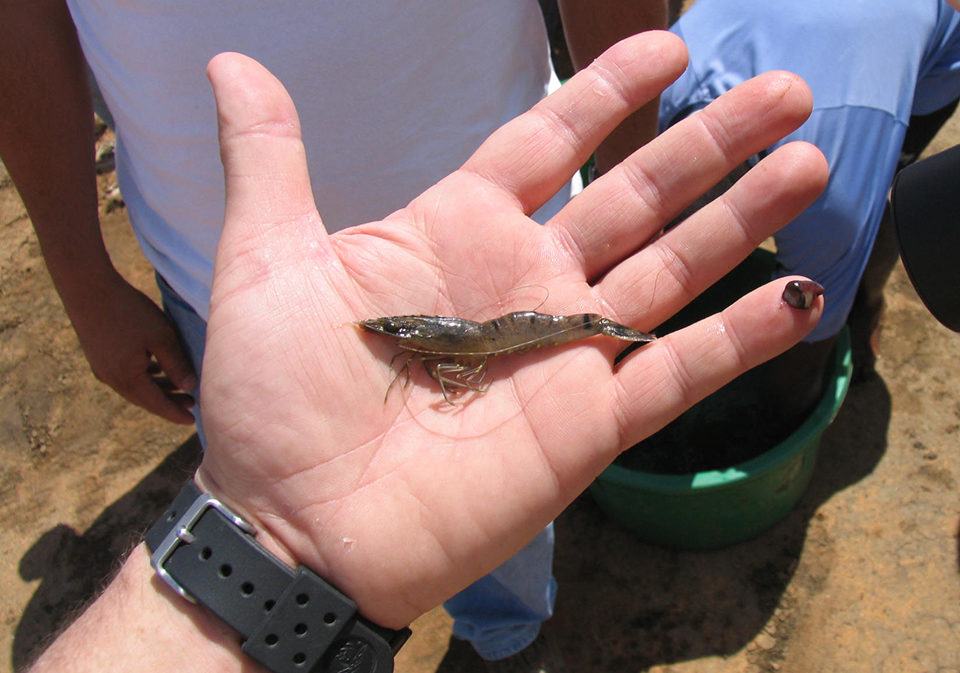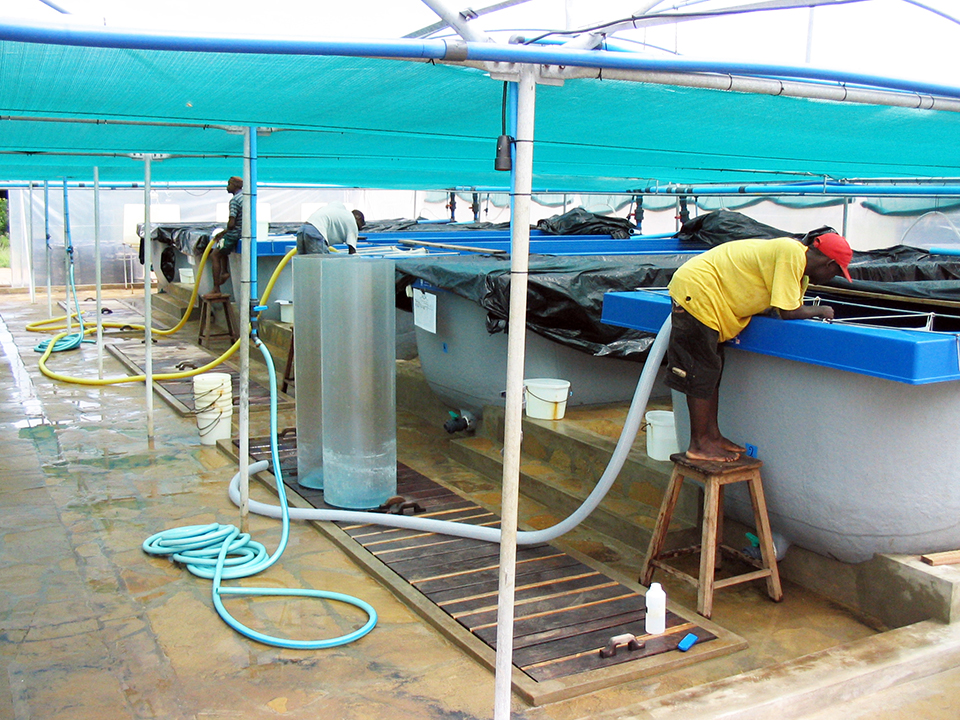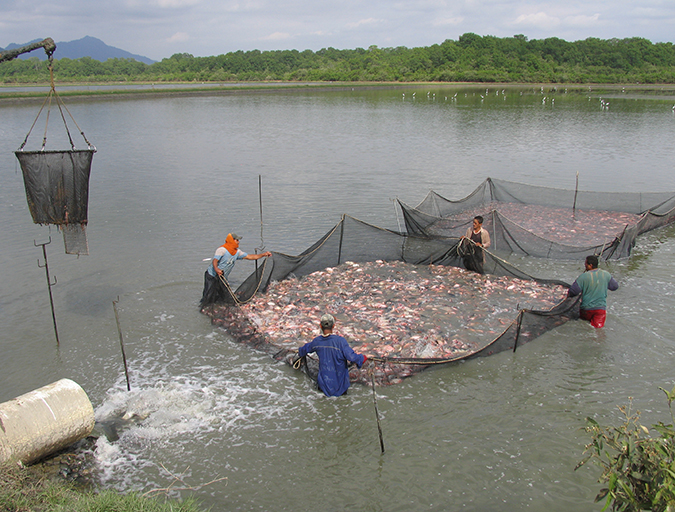Contingency plan

When sanitary emergencies occur at aquaculture facilities, staff must be ready to react effectively. Therefore, a contingency plan that describes the steps and timing the staff needs to follow has to be included in each facility’s biosecurity strategy. The objective of this plan is to recover production in the minimum time possible, at the minimum cost and with minimum disruption. The efficiency of this contingency plan is linked to a rapid initial response and effective implementation of biosecurity measures.
The contingency plan will depend on whether the pathogen or disease detected is exotic or endemic to the facility, its potential economic impacts and whether there is the intent to eradicate it from the facility.
The three options available in the case of a sanitary emergency are treatment, which only applies in the cases of bacterial or fungal infections; slaughtering of the population, in the case of severe exotic pathogens; or continued production under strict internal biosecurity control, as in the case of endemic diseases.
Flag system
One of the first stages in a sanitary emergency is to create awareness. Staff should be informed of the situation and act in accordance with the contingency plan. To provide awareness, a flag system could be established at the affected site.
This flag system could, for example, use three different colors: green to report normal operations, yellow to indicate the detection of pathogens and red to indicate the presence of clinical signs or mortality. This flag code and proposed actions are summarized in Table 1. Every member of the staff needs to be well aware of the appropriate actions when problems are identified. This training should, of course, be done before emergencies occur.
Alday, Flag color codes, Table 1
| Flag Color | Meaning, Suggested Action |
|---|---|
| Green Flag | Normal status, no pathogen or disease detection. |
| Yellow Flag | Regular practices with normal movement of vehicles and staff. |
| Yellow Flag | Detection of a pathogen/infection by polymerase chain reaction (PCR, very light or light positive), but no clinical signs or disease outbreak observed. |
| Red Flag | Disease involving clinical signs/mortality or suspicion of a disease outbreak (PCR strong/medium positive) or histology positive. |
| Red Flag | Allocation of personnel to monitor the strict implementation of biosecurity measures. Definition of buffer compartments. Isolation of affected and buffer compartments through further restrictions on the movement of staff, vehicles, etc. Histology monitoring of the affected stock and PCR monitoring of buffer zones. |
Decision making
Before deciding whether to treat, slaughter or continue production, several parameters need to be evaluated. These include the status of historical records and records of the current sanitary situation, whether the emergency is due to the detection of a pathogen or the expression of disease by that pathogen, the potential severity of the disease, shrimp size and mortality pattern. The economic situation of the company and current shrimp market value are additional factors.
Exotic pathogens
Table 2 presents recommended decisions in the case of the detection or expression of disease by an exotic pathogen or a pathogen that affects broodstock. The presence of most of the systemic pathogens that cause high mortality requires elimination of the population. The detection of infectious hypodermal and hematopoietic necrosis virus (IHHNV) in broodstock would require screening infected animals out of the system, while if it is detected in ponds, waiting to evaluate shrimp performance would be the recommended option. However, rearing infected animals may perpetuate infection within a facility.
Alday, Decision making for the detection of exotic pathogens, Table 2
| Pathogen | Detection | Disease Outbreak |
|---|---|---|
| WSSV | Eliminate | Eliminate |
| YHV | Eliminate | Eliminate |
| TSV | Eliminate | Eliminate |
| IMNV | Eliminate | Eliminate |
| B.P. | Disinfect | – |
| MBV | Disinfect | – |
| HPV | Disinfect | – |
| IHHNV | Screen out in broodstock | Wait and see |
| Streptococcus | Eliminate | Eliminate |
Enteric viruses such as hematopancreatic virus (HPV), monodon baculovirus (MBV), baculovirus penaei (B.P.) and baculoviral midgut gland necrosis (BMNV) can be screened out with washing and disinfection of eggs and nauplii. These pathogens are likely to affect growth but unlikely to cause a disease outbreak.
Non-exotic pathogens
The criteria for deciding to harvest or slaughter in the case of non-exotic diseases depends on shrimp size and mortality pattern. These can be analyzed using the matrix in Table 3. Doubt arises when mortality is light in small animals or slow in large animals.
Alday, Criteria to decide whether to do an emergency harvest, Table 3
| Condition | Shrimp, < 15 g | Shrimp, > 15 g |
|---|---|---|
| Heavy mortality | Slaughter | Harvest (biosecurity risk) |
| Light or slow mortality | Slaughter or continue? | Harvest or continue? |
Harvesting is a high-risk activity regardless of the health status of the shrimp, even more so in the case of an emergency harvest. Close supervision by biosecurity personnel is required, and special emphasis should be placed on the collection of organisms using a mesh bag at pond discharge points, thorough disinfection of the harvest site and equipment, and safe transportation of the product to the processing plant.
Reporting chain
Reporting of mortality, clinical signs, abnormal behavior or positive laboratory results needs to be as efficient as possible. This requires a chain of reporting as short as possible with immediate communication.
Simulation exercises
A simulation exercise applying the contingency plan should be organized if there has been no need to test it. Periodic testing exercises of a disease outbreak should be carried out to test the efficacy of the response. The contingency plan should also specify:
- Diagnostic procedures and, in the case of an exotic disease, the diagnostic confirmation
- Reporting procedures
- Instructions for sanitary slaughtering
- Instructions for shrimp handling and disposal in case of mortality or sanitary slaughtering
- Instructions for the movement of staff, vehicles and animals
- Instructions for the establishment of positive and buffer compartments
- Disinfection procedures
- Fallowing procedures.
Editor’s Note: Part I of this article, which ran in the July/August Advocate, focused on the criteria and steps involved in establishing biosecurity plans.
(Editor’s Note: This article was originally published in the November/December 2010 print edition of the Global Aquaculture Advocate.)
Now that you've reached the end of the article ...
… please consider supporting GSA’s mission to advance responsible seafood practices through education, advocacy and third-party assurances. The Advocate aims to document the evolution of responsible seafood practices and share the expansive knowledge of our vast network of contributors.
By becoming a Global Seafood Alliance member, you’re ensuring that all of the pre-competitive work we do through member benefits, resources and events can continue. Individual membership costs just $50 a year.
Not a GSA member? Join us.
Author
-
Victoria Alday-Sanz, Ph.D.
Pescanova
Gran Via 658, 4-1
08010 Barcelona, Spain[109,111,99,46,111,111,104,97,121,64,121,97,100,108,97,95,97,105,114,111,116,99,105,118]
Tagged With
Related Posts

Health & Welfare
Designing a biosecurity plan for shrimp aquaculture, part 1
The development of an effective biosecurity plan requires full understanding of facility design and operations, and knowledge of the animals’ health status and the transmission modes of pathogens in order to identify the risks and define meaningful measures.

Health & Welfare
A comprehensive look at the Proficiency Test for farmed shrimp
The University of Arizona Aquaculture Pathology Laboratory has carried out the Proficiency Test (PT) since 2005, with 300-plus diagnostic laboratories participating while improving their capabilities in the diagnosis of several shrimp pathogens.

Health & Welfare
A holistic management approach to EMS
Early Mortality Syndrome has devastated farmed shrimp in Asia and Latin America. With better understanding of the pathogen and the development and improvement of novel strategies, shrimp farmers are now able to better manage the disease.

Responsibility
Addressing safety in Latin America’s tilapia supply chain
Over the last decade, the experience gained by many tilapia farmers combined with proficient programs implemented by local governments have significantly improved tilapia production in various Latin American countries like Colombia, Mexico, Ecuador and other important tilapia producers in the region.



